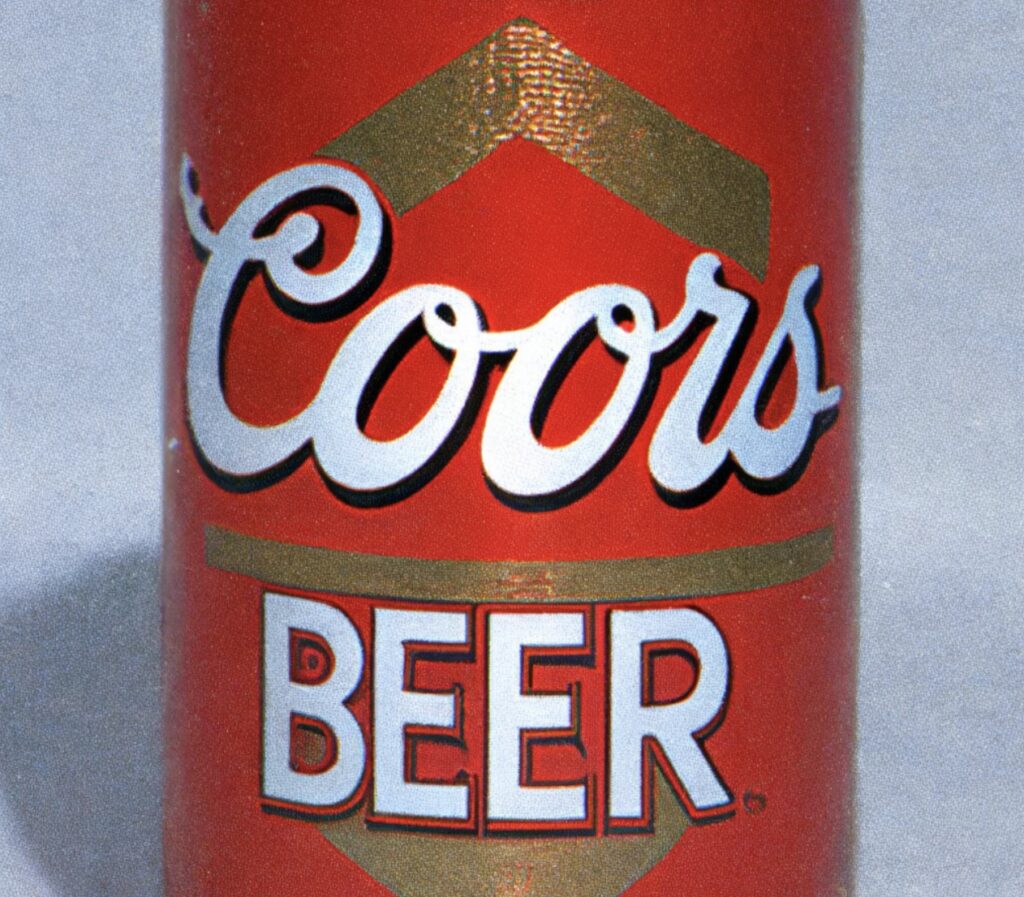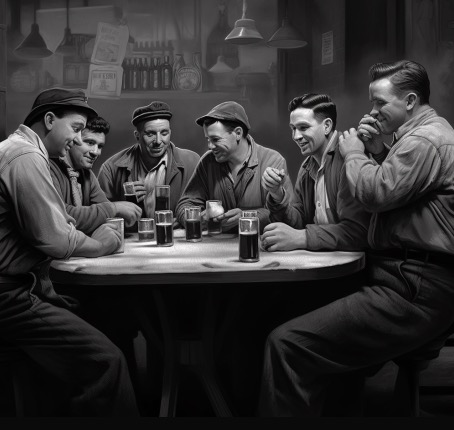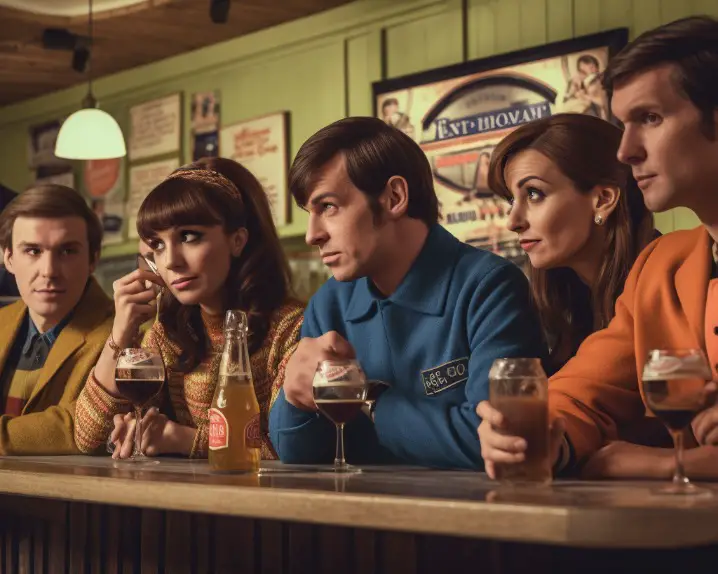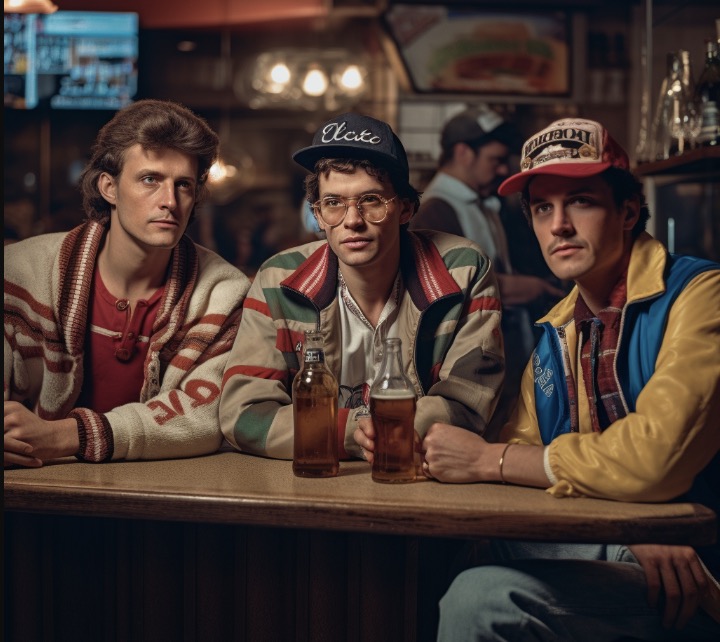The 90s was an era of iconic fashion, memorable music, and of course, a unique beer culture. While the craft beer revolution was taking off, most beer drinkers still turned to the classics.
From household names like Budweiser and Coors to imported brands like Heineken and Bass Ale, there was no shortage of beloved beers in the 90s.
But what were some of the other popular beers of the decade?
Join us as we take a nostalgic trip down memory lane to explore some of the most iconic beers of the 90s.
Overview of the top breweries in the US
In the 1990s, the US beer industry was dominated by large breweries such as Anheuser-Busch, Coors, and Miller. These breweries produced the most popular beers of the decade such as Budweiser, Miller Lite, and Coors Light.
However, the rise of craft breweries in the 80s and 90s led to a growing number of independent micro-breweries across the nation.
Although it would be a few more decades before any of these “craft” brewers broke into the list of the top brewers, they challenged the dominance of domestic lagers by introducing a host of new beer styles.
Today, popular craft breweries in the US include Sierra Nevada Brewing Company, Lagunitas Brewing Company, and Samuel Adams.
These breweries have revolutionized the US beer scene by introducing flavorful and innovative beers to a market otherwise dominated by large conglomerates. [3][4]
Popular beers in the 90s: A trip down memory lane
The 90s was a time of beer explosion in the US, with microbreweries and crafted beers gaining popularity among beer enthusiasts.
The decade saw a surge in the crafting and production of beer, with new beer varieties constantly hitting the market. Some classic beers also gained traction during this era, and many became a part of people’s lives.
Some of the most popular beers during the 90s included Coors Lite, Budweiser, Miller Lite, and many others. These were easy-to-drink beers that were perfect for casual drinking, partying, and summer barbecues.
During the 1990s, several beers gained popularity and became icons of the era.
Here are some of the popular beers from that time:
- Budweiser: Budweiser, often referred to as the “King of Beers,” continued to be a prominent choice in the 1990s. Its distinct taste and marketing campaigns made it a staple in many households.
- Coors Light: Coors Light, a light lager beer, gained popularity during the 1990s. It was known for its refreshing taste and was often associated with outdoor activities and sports.
- Miller Lite: Miller Lite, another light beer, had a strong presence in the 1990s. It marketed itself as a low-calorie option while still delivering on flavor.
- Corona Extra: Corona Extra, a Mexican pale lager, became increasingly popular during the 1990s. With its distinctive clear bottle and lime wedge, it became synonymous with beach parties and summer gatherings.
- Heineken: Heineken, a Dutch pale lager, maintained its popularity throughout the 1990s. It was often associated with a premium drinking experience and was a common sight at bars and social events.
- Guinness: Guinness, an Irish dry stout, continued to be a favorite in the 1990s. Known for its dark, rich flavor and creamy texture, it appealed to beer enthusiasts and those seeking a unique taste.
- Sam Adams Boston Lager: Sam Adams Boston Lager, a craft beer from the Boston Beer Company, gained popularity in the 1990s. It was recognized for its full-bodied flavor and quality ingredients.
- Sierra Nevada Pale Ale: Sierra Nevada Pale Ale, an American craft beer, rose to prominence in the 1990s. It was known for its hoppy taste and played a significant role in the growth of the craft beer movement.
- Red Stripe: Red Stripe, a Jamaican lager, became popular during the 1990s. Its catchy marketing campaigns and distinct stubby bottle contributed to its rise in popularity.
- Pabst Blue Ribbon: Pabst Blue Ribbon (PBR) saw a resurgence in popularity during the 1990s, especially among the alternative and indie music scenes. It gained a reputation as a “hipster” beer and was associated with counterculture movements.
These are just a few examples of popular beers from the 1990s. The beer landscape is diverse, and preferences vary across regions and individuals.
Along with such classic brews, newer breweries and brands also emerged during the 90s, such as Sierra Nevada Pale Ale, Lagunitas IPA, and Samuel Adams Boston Lager. These brands offered unique flavors and craft brewing techniques that appealed to a more discerning beer-drinking audience.
Today, these beers are still beloved, and hold a special place in the hearts of those who remember the golden era of beer in the 90s. [5][6]
Introduction to the brewing industry in the 90s
The brewing industry in the 90s saw a significant rise in popularity of craft beers. This decade marked the rise of brew pubs and ultra-hoppy IPAs, challenging the dominance of the big three breweries in the US market.
The government incentivized smaller breweries with a lower excise tax rate for those producing under 2 million barrels, but restrictive laws on packaging of beers hindered their ability to compete with larger conglomerates.

Competition also rose from imported beers, including those from traditional European markets and new world beers from territories such as Japan, Korea, and Africa. In this era, popular old-school beers such as Budweiser, Miller Lite, and Coors Light, continued to hold sway in the domestic market.
However, craft breweries and beers from newer territories slowly began to gain ground in the American beer scene, setting the tone for the evolution of the craft beer industry in the US. [7][8]
Overview of popular beer brands
The 1990s was a decade of great change and innovation for the beer industry. There was a rise in microbreweries and the production of crafted beers, which saw a significant increase in beer varieties. Some of the classic beers gained popularity in this era.
The top three breweries in the US continued to control over 70% of the domestic beer market at the time. Imported beers also continued to rise and compete with the major national breweries, including beer styles from traditional European markets like the UK and Belgium.
Meanwhile, new world beers like Fosters Castlemaine XXXX Coopers and other larger Australian brands rose in popularity, as well as beers from newer territories such as Japan, Korea, and even Africa.

Popular brands like Coors Light, Guinness, Bass Pale Ale, Murphys Irish Stout, and Harp Lager were among the top beers of the decade. It was a time of great experimentation and change in the beer industry, and it was clear that the rise of crafted and microbreweries was here to stay. [9][10]
Nostalgic revisit to beers that defined the decade: Budweiser, Miller Lite, Coors Light, and more.
When you think of the 90s, it’s hard not to conjure up images of Budweiser, Miller Lite, and Coors Light, the iconic brands that dominated the decade. These beers were the go-to beverages for parties, sporting events, and casual hangouts.
But they weren’t the only popular beers of the era. Michelob, Rolling Rock, St. Pauli Girl, and Heineken also captured the attention of beer drinkers. Each of these brands had a unique flavor and marketing campaign that contributed to their success.
They became instant classics and still hold a special place in the hearts of those who grew up during the 90s. Although the craft beer movement has grown exponentially over the past few decades, it’s hard to forget the impact that these beers had on the industry and the culture of the time. [11][12]
The rise of brew pubs and ultra-hoppy IPAs in the 90s
The 1980s was an exciting time for beer in the United States as the craft beer explosion was just starting to take off. It was a decade marked by the rise of brewpubs and the introduction of ultra-hoppy IPAs that challenged the traditional beer palate.
The 1990s saw an explosion in independently owned microbreweries as the number rose from 100 to over 1000. However, it wasn’t until 1999 that Montana became the last of the 50 states to legalize brewpubs by state orders. Craft breweries faced many challenges during this time, such as government incentives and restrictive laws, as well as competition from imported beers.
Nonetheless, the beer scene continued to grow, with the introduction of newer territories such as Japan, Korea, and Africa. The 90s were an exciting time for beer lovers as it was a decade marked by innovation and experimentation. [1][2]
II. How did we get there? 1950s to 1990s beer scene
The beer scene in the United States underwent significant changes and evolution from the 1950s to the 1990s. This period witnessed a transition from dominance by large national breweries to a flourishing craft beer movement, accompanied by shifts in consumer preferences and brewing practices. Let’s explore the key developments that shaped the beer landscape during this time.

In the 1950s, the beer industry in the US was primarily dominated by a few major breweries, including Anheuser-Busch, Miller, and Pabst. These breweries produced mass-market lagers that aimed for consistency and broad appeal. Light-bodied, pale yellow beers with low hop bitterness and relatively low alcohol content were the norm. The beer market was fairly homogenous, with limited variety and regional differences.
However, in the 1960s and 1970s, consumer tastes began to change. Influenced by cultural shifts and a desire for more diverse flavors, a counterculture movement emerged, which sought alternatives to the mainstream beers. This movement, along with changing laws and regulations, created opportunities for smaller, independent breweries to enter the market.

The 1980s marked a turning point in the beer landscape with the birth of the craft beer movement. The term “craft beer” referred to beers produced by small, independent breweries that focused on quality, flavor, and traditional brewing techniques. Pioneering breweries such as Sierra Nevada, Boston Beer Company (Samuel Adams), and Anchor Brewing led the way, introducing innovative styles and flavors that challenged the dominance of mass-market beers.
One significant development during this time was the legalization of homebrewing in 1978. This change in legislation allowed beer enthusiasts to experiment and develop their brewing skills, contributing to the growth of the craft beer movement. Homebrewers turned into professional brewers, and their passion for beer became a driving force in the industry.
As the craft beer movement gained momentum in the 1980s and 1990s, a diverse range of beer styles emerged. Pale ales, IPAs (India Pale Ales), stouts, porters, Belgian-style ales, and wheat beers gained popularity among consumers seeking unique and flavorful options. Microbreweries and brewpubs, which offered on-site brewing and direct sales, began popping up across the country.
Consumer demand for craft beer continued to rise, leading to an increase in the number of breweries. By the end of the 1990s, there were over 1,500 craft breweries operating in the United States. This growth was driven by a passionate community of beer enthusiasts, increased awareness of beer styles and flavors, and a desire to support local businesses.

In response to the success of craft breweries, larger breweries started to take notice and began acquiring or investing in smaller breweries. This trend allowed craft breweries to expand their distribution while maintaining their commitment to quality and independent brewing. It also led to the emergence of regional craft beer brands with wider availability.
By the late 1990s, craft beer had firmly established itself as a significant player in the beer industry. The movement would continue to gain momentum in the following decades, with exponential growth in the number of breweries and increasing consumer demand for diverse, high-quality beers.
In summary, the beer scene in the US evolved from a homogeneous landscape dominated by large national breweries in the 1950s to a vibrant and diverse craft beer movement by the 1990s. Changing consumer preferences, cultural shifts, legalization of homebrewing, and the passion of beer enthusiasts contributed to the rise of craft beer and the emergence of small, independent breweries. This period laid the foundation for the thriving beer culture we see today.
Comparison between popular beers of the 90s and current beer trends
When it comes to comparing the popular beers of the 90s with current beer trends, one of the most notable differences is the shift towards craft beer. While brands like Budweiser, Miller Lite, and Coors Light dominated the market in the 90s, today’s beer culture is all about unique and flavorful craft brews.
In fact, the number of craft breweries in the US has increased dramatically in recent years, with over 8,000 now in operation. Another trend that has emerged since the 90s is the focus on local and regional beer, with many consumers seeking out brews that reflect the flavors and culture of their area.
Additionally, there has been a rise in the popularity of sour beers, hazy IPAs, and other experimental styles, as well as a growing interest in low-alcohol and non-alcoholic options. Overall, while the beers of the 90s hold a special nostalgic place in many beer lovers’ hearts, the craft beer scene of today offers a wider range of options and flavors than ever before.
Government incentives and restrictive laws for smaller breweries
The government has introduced various incentives for smaller breweries in the US, such as a lower excise tax rate for breweries producing under 2 million barrels. However, restrictive laws and regulations have also been put in place that make it difficult for them to compete with larger breweries.
These laws include strict regulations on the packaging of beers and limitations on the sizes of bottles and growlers, which can impose a disproportionate burden on small and medium-sized producers.
This has led to some struggles for independent craft breweries, but many have managed to survive and even thrive. Despite these challenges, the craft beer industry has continued to evolve and grow, with new breweries and beer styles always arising. [15][16]
Competition from imported beers
During the 90s, competition from imported beers continued to rise, providing a challenge for major national breweries. Beer styles from traditional European markets such as the UK or Belgium were imported, alongside an ever-growing list of German lagers.
Additionally, beers from newer territories such as Japan, Korea, and Africa rose in popularity, reflecting the growing “foodie” culture and the intertwined beer scene in the US. This rise in imported beers was another factor that made it difficult for micro-breweries to compete with global conglomerates that controlled over 70% of the domestic beer market.
However, this competition also fueled innovation and experimentation in the American brewing industry, as breweries sought to offer unique and diverse options to differentiate themselves. Despite the challenges, American brewers continued to thrive and cement their place in the evolving beer scene of the 90s. [17][18]
Rising popularity of beers from newer territories
In the 90s, beer lovers were not just limited to traditional European markets or American brands. The decade saw a rising popularity of beers from newer territories such as Japan, Korea, and even Africa. As the foodie culture grew, people were opening up to new and exotic flavors, and the beer scene reflected that.
Larger Australian brands such as Fosters Castlemaine XXXX and Coopers also began to appear on the market. This trend showed that beer was not just a local or national product but had the potential to bring people and cultures from around the world together.
Today, the trend continues, with breweries experimenting with unique ingredients and flavors from all over the globe. The rising popularity of beers from newer territories in the 90s paved the way for the diversity and creativity we see in craft beer today. [19][20]
III. Popular Old-School Beers of the 1990s
Lagunitas IPA by Lagunitas Brewing Company
Lagunitas IPA by Lagunitas Brewing Company is a well-rounded and highly drinkable India Pale Ale that has become a popular choice amongst beer enthusiasts. Crafted on a 5-gallon homebrew kit in a kitchen just outside the Northern California hamlet of Lagunitas by Tony Magee in 1993, the beer quickly became a favorite amongst those looking for a new-world spin on an old-world style.
Even though palates at the time couldn’t handle the hoppiness, Tony had a hunch that this was the next big thing, and he was right. Lagunitas IPA has a bit of caramel malt barley that provides the richness that mellows out the twang of the hops, including Cascade hops.
Lagunitas Brewing Company has since expanded from state to state and partnered with Heineken in 2015 to bring their band of hop-forward IPAs to the world, including Amsterdam, Brazil, and more, allowing people to enjoy this award-winning beer anywhere they go. [21][22]
Other notable brands such as Sierra Nevada Pale Ale and Samuel Adams Boston Lager
Sierra Nevada Pale Ale and Samuel Adams Boston Lager are two notable brands that had a significant impact on the American beer industry in the 90s. Sierra Nevada Pale Ale is a hop-forward pale ale that showcased the spry citrus character of American-grown hops.
It was a revolutionary concept in the commercial beer industry at that time, and it paved the way for other hop-forward beers to take center stage.
Similarly, Samuel Adams Boston Lager is a flagship beer that helped to convert many people to craft beer. Founder Jim Koch’s marketing savvy and the company’s ambitious growth challenged the dominance of Budweiser, Miller, and the old standbys.
Both brands helped to redefine the beer landscape in America and established themselves as important players in the craft beer scene. Even today, they remain popular among beer enthusiasts who appreciate the rich history of American craft beer. [23][24]
Winners in various beer style categories
The Great American Beer Festival has been an annual celebration of the best of American beer since it began in 1982.
The festival hosts a beer competition where breweries compete for medals in various beer style categories. It is a prestigious event and winning a medal is a great honor for any brewery. The 1990 festival winners list is a trip down memory lane for those who enjoyed beer in the 90s.
Some of the gold medal-winning beers included Alaskan Amber Beer in the Alts category, San Andreas Altbier in the German-style Brown Ale/Dusseldorf-style Altbier category, and Pete’s Wicked Ale in the English-style Brown Ale category, among others.
It is fascinating to see which beers were considered the best of their style at the time and how the industry has evolved since then. [25][26]
VI. Conclusion
Recap of the popular beers in the 90s and their significance in the US beer industry
The 1990s was a decade of significant growth for the US beer industry, with the rise of craft breweries and brewpubs. While major national brands like Budweiser, Miller Lite, and Coors Light still dominated the market, new beers such as Lagunitas IPA by Lagunitas Brewing Company, Sierra Nevada Pale Ale, and Samuel Adams Boston Lager began to gain popularity.
Other notable beers of the era included Pliny the Elder, Harp Lager, and Murphy’s Irish Stout. While the big three breweries at the top of the market controlled over 70% of the domestic beer market, the rise of craft breweries led to increased competition from both imported and newer territory beers.
The 90s were a decade that shaped the US beer industry into what it is today, with a diverse range of options available to consumers. [27][28]
Closing thoughts on the evolution of the craft beer scene in the US
In conclusion, the 90s saw a significant rise in the popularity of craft beers in the US, with the emergence of new breweries and the success of established ones. However, the industry also faced challenges such as restrictive laws and competition from imported beers and larger domestic breweries.
Despite this, the craft beer scene continued to innovate and evolve, introducing new and unique flavors to the market. Today, the craft beer industry is thriving, with an ever-growing number of breweries and beer connoisseurs who seek out innovative and flavorful options.
The evolution of the craft beer scene in the US truly reflects the American spirit of entrepreneurship, risk-taking, and creativity, and it will be interesting to see how it continues to develop in the years to come. [29][30]




